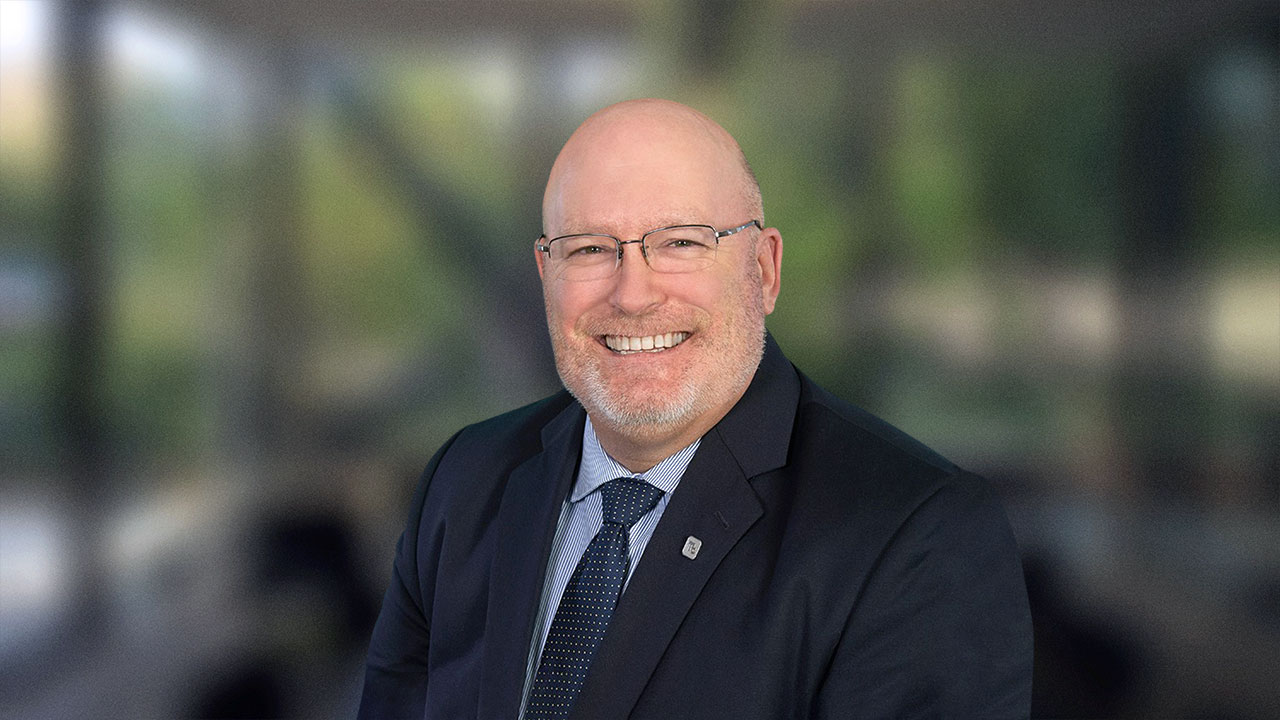
Brian Thorne, an expert in military planning, design, and construction oversight, has nearly 25 years of experience leading infrastructure projects. A retired Army Major with 22 years of service with the Army National Guard, Brian now provides exceptional leadership and project management skills to his Department of Defense (DoD) clients.
Brian Thorne is Tetra Tech’s go-to resource when working with the DoD. Over the past 10 years, Brian has led planning and design of military facilities and infrastructure to support clients under extremely aggressive schedules. He partners with his clients to achieve consensus early on in the project to maximize available funding, minimize changes needed later, and meet client delivery schedules. Leveraging his military training, Brian brings result-oriented leadership, communication, and problem-solving skills to meet or exceed client expectations. During his tenure at Tetra Tech, Brian has managed planning and design task orders for the U.S. Army Corps of Engineers Transatlantic Middle East District totaling more than $75 million.
What are some of the common needs and challenges you see with your DoD clients?
Our clients need to have the right facilities and infrastructure to support their training, combat mission, or whatever it is that they are trying to accomplish. I think my military background helps me understand their needs faster and immediately build trust because I’ve also worn the uniform.
What are the key factors in helping your clients achieve their goals and objectives?
I am able to multitask and focus on what’s important because I am organized and regimented. My time in the military trained me to manage the unexpected and overcome challenges, skills that are equally important as a project manager in industry. I have honed these skills over time so that they have become an automatic part of my job. My responsibility, as a team leader, project manager, and task order manager is to ensure the end user is happy.
If our clients don’t succeed, then we don’t succeed. My staff and I use master action item lists and detailed project schedules to keep clients informed regarding the key issues. These lists and schedules also help us stay on track with our clients and focus on the issues at hand to get them resolved expeditiously. Generally, the third time you discuss a plan is when you get the real answer, or what the client is really thinking. In client meetings, we use visuals, site plans, or floor plans and refine them every day over a one- to two-week period. We show them what the plan or design could look like and confirm with the client that we correctly understand the client’s needs. Our team understands that the first idea may not be the final solution.
How do you help your clients achieve consensus among multiple stakeholders?
We give our clients the confidence that we know what we’re doing as professional engineers and architects and that we’re here to help them achieve their objectives. You have to provide solutions to their problems. When clients tell you they want something “bigger,” you have to explain what the implications are going to be—our role is to collect information and come up with a consensus.
Often, when we’re doing planning charrettes, we make changes on the fly with the client right there. Our team knows that just because that’s the site plan today, it doesn’t mean that it’s going to be tomorrow. We stay loose and flexible and adapt to changing needs and ideas because plans evolve over several iterations before we reach a decision. Infrastructure is generally one piece of many line items in a program, and when you’re dealing with a program manager, they frequently don’t concern themselves with it unless there is a schedule issue. For me, having been in the military, getting it right means something. While some projects may involve just a facility or a water line, I know our projects are important regardless of the scope.
How do you meet tight deadlines?
You meet tight deadlines by supplying the resources that are needed—you have to be proactive. We work very quickly through expedited schedules, and we’re willing to do it because we understand that success resides in getting a delivered facility that’s commissioned, accepted, and ready to support the program. A lot of our schedules are aggressive from the start, but by applying higher-level resources and selecting the right team, we’re able to meet the requirements. The way I see it, teaming with good soldiers who are confident in their ability to deal with unexpected situations and can lead when necessary helps get the job done.
Quality assurance is another factor we use to ensure that we’re delivering a product that meets the task order requirement. We know our clients are busy, so we help them by assuring them we will meet the project requirements and deadlines, which gives them one less thing to worry about. We drive the project, agree to a schedule, and keep our clients up to date by having weekly meetings. We also coordinate with our counterparts throughout the week to keep the project on track. Moving review meetings around and providing interim submittals to help expedite the process are examples of how we accomplish being flexible, meeting deadlines, and being a partner—it’s all part of how we execute our task orders.